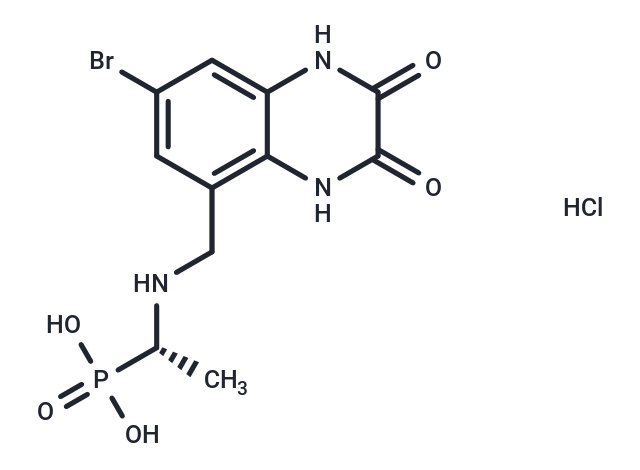Shopping Cart
- Remove All

Your shopping cart is currently empty


| Pack Size | Price | Availability | Quantity |
|---|---|---|---|
| 1 mg | $87 | In Stock | |
| 5 mg | $197 | In Stock | |
| 10 mg | $243 | In Stock | |
| 25 mg | $535 | In Stock | |
| 50 mg | $773 | In Stock | |
| 100 mg | $1,080 | In Stock |
| Description | CGP 78608 hydrochloride is a specific antagonist at the glycine binding site of the NMDA receptor (IC50 = 6 nM). CGP 78608 hydrochloride exhibits anticonvulsant activity. CGP 78608 hydrochloride potentiates GluN1/GluN3A-mediated glycine currents (estimated EC50 = 26.3 nM). |
| In vitro | CGP 78608 hydrochloride reduces ammonia-dependent cGMP synthesis and relieves ammonia neurotoxicity[2]. CGP-78608 hydrochloride reduces glycine sensitivity of GluN1 and GluN3A receptors[3]. |
| In vivo | CGP-78608 (i.p.) exhibits anticonvulsant effects in the electroshock-induced convulsions assay in mice[1]. |
| Alias | PAMQX |
| Molecular Weight | 414.58 |
| Formula | C11H14BrClN3O5P |
| Cas No. | 1135278-54-4 |
| Storage | Powder: -20°C for 3 years | In solvent: -80°C for 1 year | ||||||||||||||||||||||||||||||
| Solubility Information | DMSO: 37.4 mg/mL (90.0 mM) | ||||||||||||||||||||||||||||||
Solution Preparation Table | |||||||||||||||||||||||||||||||
DMSO
| |||||||||||||||||||||||||||||||

Copyright © 2015-2024 TargetMol Chemicals Inc. All Rights Reserved.